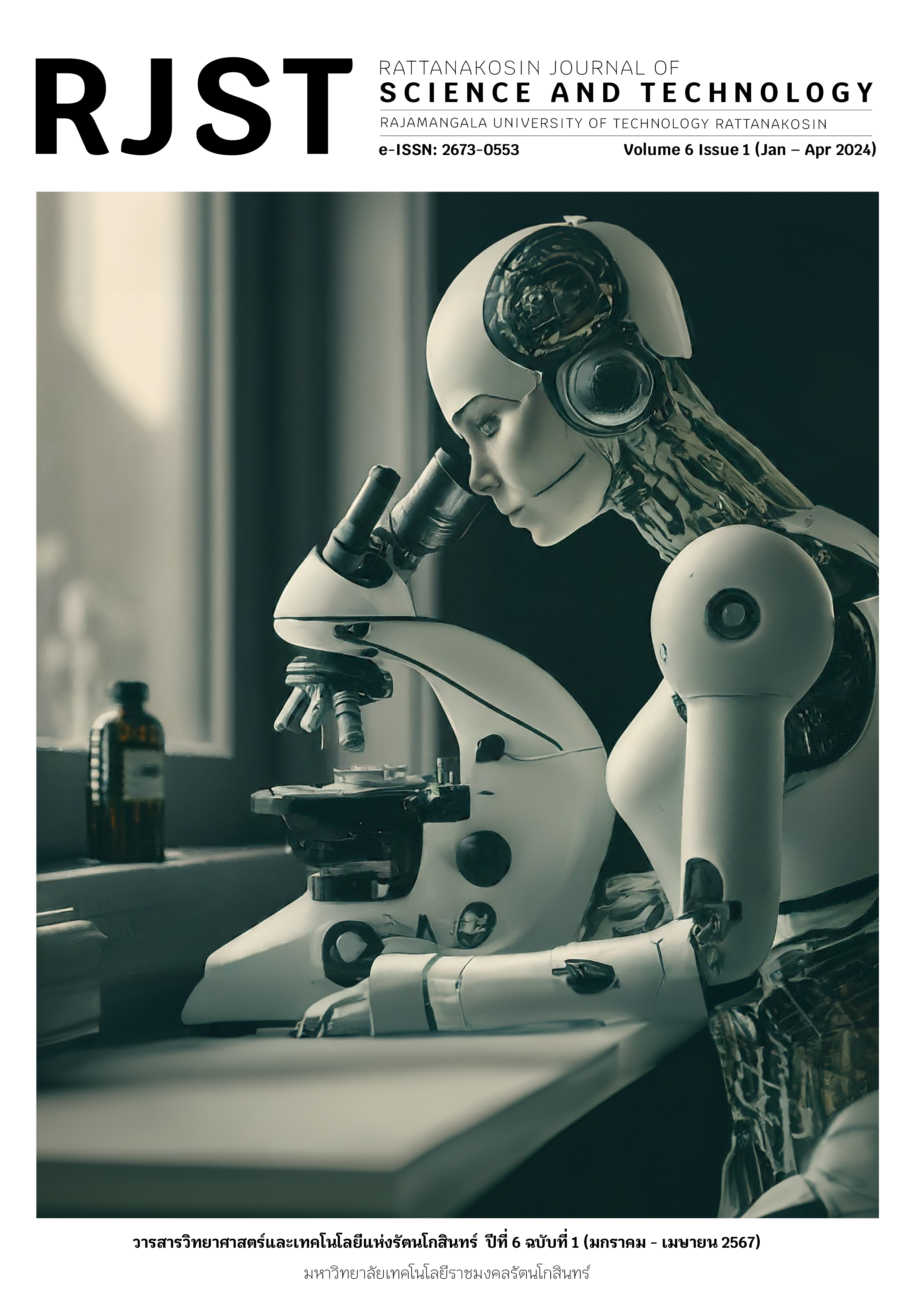Using of Sacha inchi Flour as a Butter Substitute in Biscuits
Main Article Content
Abstract
The purpose of this research was to developed Sacha Inchi products in Nong Ong, U Thong District, Suphan Buri province. Sacha Inchi flour was used as a substitute for animal-derived butter to develop biscuits products. The study found that Microwave-roasted Sacha Inchi were able to be ground into Sacha Inchi flour with suitable physical and chemical properties to develop biscuits than roasted Sacha Inchi. There were four different formulations of Sacha Inchi flour 0%, 15%, 25 and 35%. It was found that biscuit products using 25% Sacha Inchi flour instead of wheat flour and butter could be formed into pastry sheets. The protein fat and carbohydrate contents were 16.53, 23.59 and 2.60 percent, respectively. The total phenolic compounds were 20.34 mgGAE/100 g, which was significantly different from the control. The storage conditions were studied for 1, 2 and 3 months at 4 °C and room temperature. Two types of packaging were used: laminated bags and cans. It was found that they could be stored for at least 3 months under normal atmosphere at 4⁰C in laminated bags. The moisture content of biscuits products is 1-2 %, which is lower than the moisture content that causes biscuits to lose their crispness, which is 7%. It was found that the microorganisms were in the microbiological standard of the cereal snacks. (Thai Industrial Standards Institute, 1998), which requires the total microbial count not to exceed 104 colony per 1 g sample or 4 log10 CFU/g.
Article Details

This work is licensed under a Creative Commons Attribution-NonCommercial-NoDerivatives 4.0 International License.
The content within the published articles, including images and tables, is copyrighted by Rajamangala University of Technology Rattanakosin. Any use of the article's content, text, ideas, images, or tables for commercial purposes in various formats requires permission from the journal's editorial board.
Rajamangala University of Technology Rattanakosin permits the use and dissemination of article files under the condition that proper attribution to the journal is provided and the content is not used for commercial purposes.
The opinions and views expressed in the articles are solely those of the respective authors and are not associated with Rajamangala University of Technology Rattanakosin or other faculty members in the university. The authors bear full responsibility for the content of their articles, including any errors, and are responsible for the content and editorial review. The editorial board is not responsible for the content or views expressed in the articles.
References
Dostert, N., Roque, J., Brokamp, G., Cano, A., & La Torre, M. (2009). Inca Peanut Botanical Data Sustainable Rural Development Program. Lima: Deutsche GTZ GmbH.
Hazen, Duclos. (1980). Guidelnies for the establisment and operation of vegetable oil factors. E.E.U.U. Cornell University.
Hamaker, B. R., Valles, C., Gilman, R., Hardmeier, R. M., Clark, D., Garcia, H. H.,...& Rodriguez, T. (1992). Amino acid and fatty acid profiles of the Inca peanut (Plukenetia volubilis). Cereal Chem, 69(4), 461-463.
Maurer, Natalie E; Hatta, Beatriz; Pascual-chagman, Gloria & Rodriguez-saona, Luis E. (2012, September). Characterization and authentication of a novel vegetable source of omega-3 fatty acids, Sacha Inchi (Plukenetiavolubilis L.) oil. Food Chemistry, 134(2), 1173-1180.
Boriphatmongkon, K., Jirawatkul, W., & Taweechoktiphat, N. (2011). Production and Sales of Cookie from the Riceberry Rice. M.A. Program in Business Administration. Thammasart Business School, Thammasart University. (in Thai)
Nindo CI, Sun T, Wang S, Tang J & Powers J. (2003). Evaluation of drying technologies for retention of physical quality and antioxidants in asparagus (Asparagus officinalis, L.). LWT-Food Science and Technology, 36(5), 507-16.
Thumrongchote, D., Junlaya, W., & Wongphaisanrit, R. (2005). Gluten-free bread. Bangkok: Phetpraguy.
Maeban. (2009). THE BREAD BOOK. Bangkok: Maeban.
Sriratanaalam, S. (2015). Square Gata Hitotsu de Kantani Oishi Chigiri Pan. Bangkok: Amarin.
AOAC. 2000. Official Methods of Analysis of AOAC International. 17th ed., Maryland, USA.
Tang, J. (2013). Physicochemical and Sensory Properties of Soy Milk from Five Soybean Line. Master of Science Thesis. University of Missuri-Columbia.
Gutiérrez LF, Rosada LM & Jiménez Á. (2001).Chemical composition of Sacha Inchi (Plukenetia volubilis L.) seeds and characteristics of their lipid fraction. Grasasy aceites, 62(1), 76-83.
Skerget M, Kotnit P, Hadolin M, Hras AR, Simonic M & Knez Z. (2005). Phenols, proanthocyanidins, flavones and flavonols in some plant material and their antioxidant activity. Food Chem, 89, 191-198.
Stoklosa, A.M., Lipasek, R.A., Taylor, L.S. & Mauer, L. J. (2012). Effects of storage conditions, formulation, and particle size on moisture sorption and flowability of powders: A study of deliquescent ingredient blends. Food Research International, 49, 783-791.
Chittapalo, T. & Songsanandr, P. (2014). Product development of black glutinous rice crackerwith Panang flavor and its quality changes. International Food Research Journal, 21(5), 2025-2029.
Areekul, V., Phongpipatpong, M., Narinsuksanti, S. & Tarchew, S. (2014). Research Report on Development of Instant Jiaogulan Tea Powder Using Spray Dryer and Its Storage Stability. King Mokut, s Institute of Technology Ladkrabang, Bankok. (in Thai)


